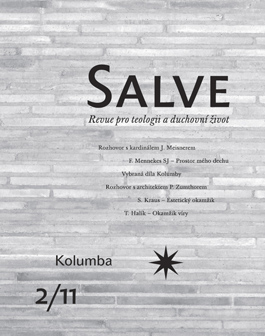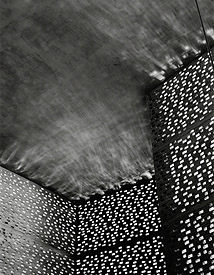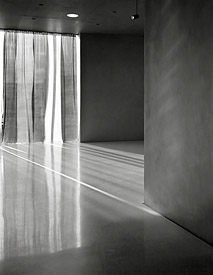
Columbus Museum of Art in the magazine Salve 2/2011
 |
The issue opens with an interview with one of the key movers of the entire project, Cardinal Joachim Meisner, the Archbishop of Cologne, who is not only an influential figure in the global church but also a man who perceives the importance of a permanent dialogue between Christianity and modern society and the significance of art for this dialogue.
 |
Two studies by the doyen of the Cologne dialogue between the church and modern art, Friedhelm Mennekes SJ, are personal testimonies about the function and radiance of the Cologne Museum. The block of texts Selected Works of Cologne represents the way in which art pieces are written about and contemplated at Cologne - individual works are not presented in a positivist descriptive form, common in other museums, but in the strength of their impact.
 |
The issue concludes with two extensive reflections. The first by Stefan Krause on the aesthetic moment that stands at the beginning of every true encounter with a work of art and which, although difficult to express in words, forms an important existential experience in a person's life. The second reflection by theologian Tomáš Halík responds to Krause's "aesthetic moment" and seeks analogies to a similar "moment of faith," that is, the moment of inner conversion, which is equally challenging to capture in words, yet all the more crucial for a person.
The conclusion of Salve belongs to the Calendar, which helps orient in the fundamental milestones of the Cologne Museum against the backdrop of the history of the entire Cologne. A block of reviews and annotations is also included. The extensive visual accompaniment presents both the artworks from the collections of the Cologne Museum discussed in the texts and striking architecture of the building itself in impressive detail.
The journal Salve is this time exceptionally published in a German version as well. The content of the issue of Salve can be viewed at www.krystal.op.cz/salve-periodika
The English translation is powered by AI tool. Switch to Czech to view the original text source.
0 comments
add comment









